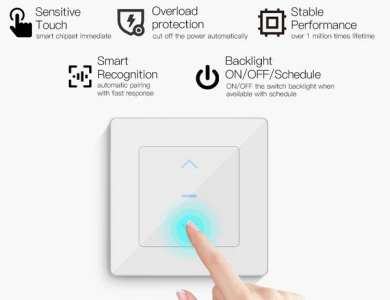In an age dominated by technology, the presence of gadgets has become ubiquitous, especially among children. While these devices offer educational opportunities and entertainment, concerns about the adverse effects on children’s physical and mental well-being have surged.
Earlier the idea of school trips in Dubai used to be fascinating for students. Now, they are more immersed in their tech gadgets, which take them away from the beauty of nature.
This article delves into the potential drawbacks of tech gadgets on kids and explores effective strategies for keeping them away from the digital abyss.
The Adverse Impact of Tech Gadgets on Children
Physical Health Concerns
The sedentary nature of prolonged screen time is a significant contributor to the decline in children’s physical health. Hours spent on gadgets often translate into less time engaging in physical activities, leading to issues such as obesity and poor posture.
The World Health Organization recommends a balanced lifestyle that includes physical activity, and excessive gadget use among children poses a threat to this balance.
Sleep Disruption
The blue light emitted by screens can interfere with the body’s natural sleep-wake cycle, affecting the quality and duration of sleep, especially in children. Sleep is crucial for cognitive development, emotional regulation, and overall well-being.
Excessive screen time before bedtime can disrupt sleep patterns, leading to issues like insomnia and daytime fatigue.
Social and Emotional Impact
Over-reliance on tech gadgets can impede the development of crucial social skills in children. Excessive screen time may lead to a lack of face-to-face interactions, hindering the development of empathy, communication skills, and the ability to navigate real-world relationships.
Moreover, exposure to inappropriate content or cyberbullying can have severe emotional consequences on a child’s mental health.
Cognitive Implications
While some educational apps can enhance cognitive development, an overdose of screen time can have adverse effects on attention span and cognitive abilities.
Constant exposure to fast-paced, attention-grabbing content may contribute to shorter attention spans and difficulties in focusing on tasks that require sustained effort.
Strategies for Keeping Kids Away from Tech Gadgets
Establish Screen Time Limits
Setting clear and consistent screen time limits is essential for maintaining a healthy balance. The American Academy of Pediatrics recommends age-appropriate guidelines for screen time, ensuring that children have ample opportunities for physical activity, social interactions, and other essential aspects of their development.
Create Tech-Free Zones
Designate specific areas in your home, such as the dining room or bedrooms, as tech-free zones. This practice helps to foster real-time interactions, enhance family communication, and promote a healthier separation between screen time and the rest of daily life.
Encourage Outdoor Activities
Actively promote outdoor play and physical activities. For example, you can encourage them to partake in zipline in Dubai or any other activity of their choice.
Whether it’s organized sports, biking, or simply exploring nature, engaging in outdoor activities helps counterbalance the sedentary nature of screen time. Establishing a routine that includes outdoor play contributes to a child’s physical and mental well-being.
Model Healthy Tech Habits
Children often emulate the behaviors they observe in adults. Demonstrate healthy tech habits by limiting your screen time, especially during family moments or before bedtime. By modeling responsible gadget use, you set a positive example for your children to follow.
Provide Alternative Entertainment
Introduce alternative forms of entertainment that do not involve screens. Board games, puzzles, reading, and creative activities stimulate a child’s imagination and promote cognitive development. Offering diverse options keeps children engaged without relying solely on digital devices.
Use Parental Controls
Leverage the built-in parental controls available on devices and apps to manage and monitor your child’s screen time.
These controls allow you to set age-appropriate content restrictions, limit screen time, and track usage patterns, ensuring a safer digital environment for your children.
Engage in Joint Activities
Participate in activities that involve interaction and collaboration. Whether it’s cooking together, playing board games, or engaging in arts and crafts, joint activities strengthen family bonds and provide meaningful alternatives to solitary screen time.
Educate on Online Safety
Equip your children with the knowledge and skills to navigate the online world safely. Teach them about responsible internet use, the importance of privacy, and how to identify and report inappropriate content.
Open communication about online experiences fosters trust and empowers children to make informed decisions.
Summing it up, in the digital age, the challenge lies in finding the delicate equilibrium that allows children to harness the advantages of technology while safeguarding their physical, social, and emotional well-being.




